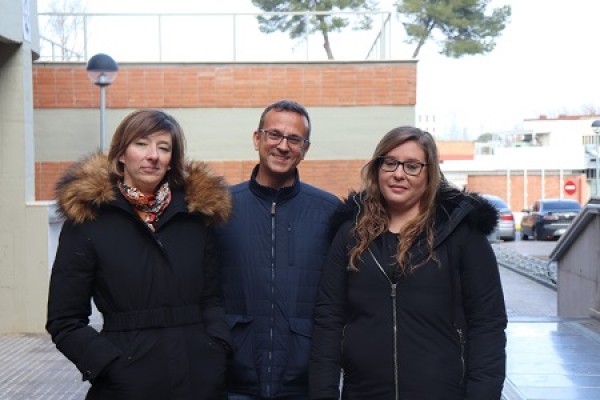According to official data from the World Health Organization, there are currently 47 million people with dementia. 80% of them are estimated to have bouts of pain and, generally speaking, are prescribed fewer painkillers than patients with intact cognitive abilities. The reason boils down to a communication problem: diagnosing pain is more complicated with these kinds of people, especially in those whose advanced dementia prevents them from verbalizing their discomfort.
A research group configured a new protocol to detect pain in this population group and, in doing so, prevent pain that could oftentimes be relieved by taking painkillers. The method, designed by researchers at the University of Cordoba Nursing Department, the Maimonides Biomedical Research Institute of Cordoba (abbreviated to IMIBIC in Spanish) and the Institute of Health Carlos III, correlated an already existing pain observational system with the use of biomarkers in saliva.
As explained by researcher Vanesa Cantón Habas, one of the lead researchers of the study, the new method is based on one known as the Painad scale, an observational methodology that assesses pain in people with cognitive impairment and inability to verbally communicate by using physiological parameters such as facial expression, behavior and posture.
While this scale has been useful in diagnosing pain, it is still an observational tool that depends almost entirely on a patient’s body language. Hence, the new method aims to strengthen it and, somehow, make it more objective by means of using pain biomarkers in saliva.
In the same way that certain molecules, like glucose, help to detect diabetes, there are other substances that are released when someone is experiencing pain and warn that something is going on within the body.
Over recent years scientific literature has found several proteins related to pain intensity in saliva. Out of all of them, this study used two -called sIgA and sTNF-RII- due to their high reproducibility and their association with painful situations. In contrast to these two substances, there are others, such as cortisol, which are linked to pain, “but also to other processes like stress, which makes them worse candidates because they can lead to misunderstandings”, explains head researcher María del Pilar Carrera González.
This new method, whose methodology was recently published in the medical journal BMJ, “is proving to be a promising, affordable, noninvasive tool”, points out researcher Vanesa Cantón. Nevertheless, the project, funded by the Andalusian Regional Government, and in which María Teresa Moreno, José Manuel Quesada and Manuel Rich are also participating, is still in its development phase.
Though the study is aimed at people with advanced dementia, one of the most underdiagnosed groups, the researchers have not ruled out its usefulness for other kinds of people, such as newborns or stroke victims who do not have effective verbal communication. This new protocol, therefore, could help remove uncertainty that family members of these kinds of patients often have and, above all, diagnose pain that is suffered in silence, and for whatever reason, cannot be communicated.
References:
Cantón-Habas, Vanesa & Carrera-González, María & Moreno-Casbas, María & Quesada-Gómez, José & Rich-Ruiz, Manuel. (2019). Correlation between biomarkers of pain in saliva and PAINAD scale in elderly people with cognitive impairment and inability to communicate: descriptive study protocol. BMJ Open. 9. e032927. 10.1136/bmjopen-2019-032927.


